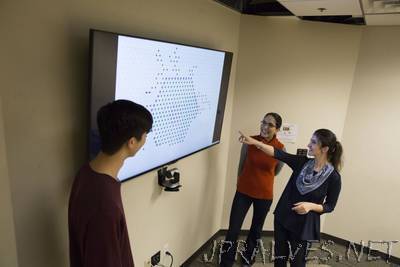
“The job would typically require a team on site using a variety of specialized tools and devices to perform tests and take measurements. Given the many interconnected components of modern bridges, some of which can be difficult to access, the labor is likely to be time-consuming and expensive. Now, says Andrea Richa, imagine the work could instead be done by a “smart” material, composed of many tiny sensors capable of detecting and measuring such things as temperature, traffic, and structural cracks and stresses. This “smart” network of tiny sensors would be achieved through the use of “programmable material” — material that can monitor and respond to its environment — consisting of “self-organizing” particles that could coat the surface of bridge components or any other objects.”
